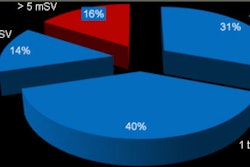Sunday, November 27 | 11:05 a.m.-11:15 a.m. | SSA17-03 | Room N228
Focusing on the terminal end of the spinal cord, known as the medullary conus, the combination of plain MRI and contrast-enhanced, T1-weighted MR imaging can be very sensitive in diagnosing acute Guillain-Barré syndrome in children.Guillain-Barré syndrome is a disorder in which the immune system attacks the nerves. Symptoms begin with weakness in the extremities, which can spread to eventually paralyze the body.
The study, from Guangzhou Medical College in China, assessed 24 cases of acute Guillain-Barré syndrome in children, focusing on both the medullary conus and the lower end of the spinal cord, known as the cauda equina. The length of illness ranged from four days to 26 days from the onset of weakness in a child's limbs.
"MRI has an excellent contrast in soft tissues, and it can distinguish subtle signal differences between normal and abnormal nerves," said presenter Dr. Zhongjun Hou, associate chief physician and associate professor in radiology. "After contrast enhancement, MRI can display the thickened and demyelinated cauda equina clearly."
MRI exams of the spine included both sagittal T1- and T2-weighted images and an axial T2-weighted MRI exam of the medullary conus. Contrast-enhanced, T1-weighted MRI with fat suppression also was performed on sagittal, coronal, and axial planes. The largest diameter of aggregated clusters of the thickened cauda equina was measured based on the findings of the axial scan in each case.
Through the comparison of plain MRI and contrast-enhanced, T1-weighted MRI exams, the researchers were able to determine the degree of cauda equina involvement and other partial spinal nerves in acute Guillain-Barré syndrome in children.
"For clinicians, they have to clarify the causes of rapid flaccid paralysis of children, and MRI can rule out important alternative differential diagnoses," Hou said. "Then, [MRI] can also provide the range, location, and severity of the involved cauda equina."
Hou and colleagues plan to continue their work in this area, drawing on the capability of diffusion-tensor imaging (DTI) in the central nervous system to image the cauda equina to potentially provide more information about the lower end of the spine.


.fFmgij6Hin.png?auto=compress%2Cformat&fit=crop&h=100&q=70&w=100)





.fFmgij6Hin.png?auto=compress%2Cformat&fit=crop&h=167&q=70&w=250)











